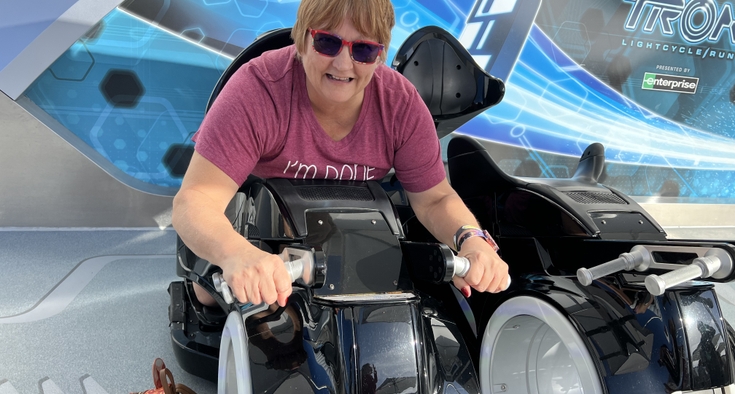If you’re of a certain age, you may have grown up hearing how back surgery could be painful, traumatic and not particularly effective.
Whether the reputation was deserved or not, the back and spine surgery of yesteryear has been replaced by a world of new procedures, techniques and technology that can offer tremendous outcomes for patients.

Since beginning his own practice in 2016, Dr. Andrew Hall Marky, who specializes in neurological spine surgery at Novant Health, has witnessed firsthand how innovations have made back surgery less painful and more effective.
People facing back surgery can expect better outcomes, speedier healing time and more permanent solutions to pain caused by spinal injuries, disc problems and other issues.
“We're taking care of complex issues in an efficient and safe way that used to be kind of high-risk surgeries – high morbidity, sometimes mortality. Things are just much, much better than they used to be,” Marky said.
Advanced spine, back and neck care.
When Marky and the care team at Novant Health Brain & Spine Surgery - Ballantyne first see a patient, it’s usually someone who has exhausted other options, such as physical therapy and medication.
Here are some of the ways that back surgery and treatment for back pain are getting better, safer from complications and easier on patients over time. Novant Health’s spine, back and neck specialists guide patients from diagnosis to post-surgery.
More precise back surgery
In the past, patients who suffered from degenerative disc disease faced anxiety over the possibility of spinal fusion surgery, which connects vertebrae for stability or corrective reasons.
Just the term “spinal fusion” sounds daunting to patients who fear a complicated surgery with long recovery times.
But the use of imaging that helps pinpoint the area of the spine to target during fusion procedures, known as intraoperative CT navigation, has changed surgical care. CT navigation allows surgeons to determine exactly where fixation screws need to be placed.
“There wasn't anything like that in existence when I started my residency, and now it's essentially mainstream,” Marky said.
More entry points to the back
Today, surgeons can do procedures on the spine without opening up the back. Fine-tuned instruments and imaging allow surgeons to reach a disc from the front of the body, going through the belly or even from the side, in a treatment called anterior or lateral lumbar interbody fusion.
You’ll often see the phrase “minimally invasive surgery” to describe procedures or operations where the incisions are small. That means less pain during recovery and in many cases, much shorter recovery times.
With more options to access the back, surgeons don’t have to constantly navigate around nearby nerves – lowering the risk of complications. “It helps us do different kinds of reconstructions with some of the bigger surgeries that we do as far as realigning the spine,” Marky said.
For example, Novant Health surgeons have used the lateral single-position surgery technique, in which patients lie on their side for spinal fusion surgery.
Top scores for safety in NC
Novant Health received the most ‘As’ for patient safety in North Carolina from The Leapfrog Group. With a focus on safety, quality and patient experience, the national, industry-leading nonprofit, evaluates and assigns letter grades ranging from A to F to hospitals across the country. Novant Health’s hospitals with “A” grades outperform 70% of hospitals nationwide for safety and quality.
Small incisions, fewer incisions
Minimally invasive surgery accomplishes another kind of precision, in which surgeons use a laparoscope – a surgical instrument with a tiny camera and light – to navigate. Surgeons use other minimally invasive procedures to cut several small incisions, resulting in lower rates of wound infections, easing recovery and creating less trauma to surrounding muscle and tissue.
The MILD (minimally invasive lumbar decompression) procedure also is available at some Novant Health locations, offering outpatient surgery that can remove excess ligament tissue that could lessen the pain caused by spinal compression in the lower back. It is performed by Novant Health’s anesthesia pain specialists.
The biggest benefit of these types of procedures? Better healing and lower risk of wound infections, Marky said.
Rapid recovery
Recovery after back surgery also has drastically changed for patients. Years ago, post-surgery patients were told to expect a long recovery and to avoid activity. Now, following back surgery, most patients will be expected to get up and get out of bed as soon as possible.
Novant Health uses ERAS, or Enhanced Recovery After Surgery, a protocol that calls for a specific set of medications to lessen the need for narcotics after surgery and get patients discharged from the hospital faster.
“Things are improving really in every facet of care. People do much better than they did in prior generations,” Marky said.
Novant Health also uses surgical wellness teams and spine navigators to help patients through the surgical process, to avoid anxiety before a procedure and help with recovery to lessen dependence on narcotics after surgery.
What’s on the horizon?
Robotically assisted surgery is already making an impact on the success of back surgery, as surgeons are exploring the benefits of this newer technology.
“I would imagine over the next 5 to10 years, robotics will be much more commonly used in neurosurgery – specifically in spine surgery,” Marky said.
But the term can be misleading. The “robots” are actually complex machines operated by highly trained surgeons for maximum precision. The surgeon operates the machine and is always in charge.
Is back surgery inevitable?
Marky usually sees patients after other options for their back pain have been exhausted. And while surgical techniques have improved immensely, the best plan for a healthy back is to prevent pain in the first place. His keys to back health:
- Keep your weight at a healthy level.
- If you have diabetes, monitor your insulin levels.
- Eat foods that are anti-inflammatory, including leafy green vegetables, nuts, greens and beans, and stay away from red meats.
- Exercise regularly, rotating between cardio and strength activities.
- Stop smoking.










